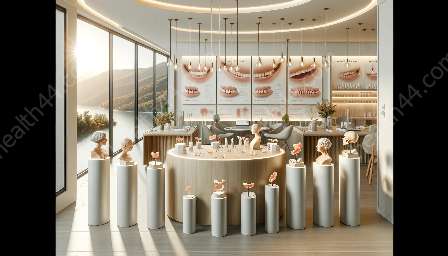When it comes to denture relining, both chairside and laboratory techniques play a crucial role in ensuring the comfort and fit of dentures for patients. In this comprehensive topic cluster, we'll delve into the differences between chairside and laboratory denture reline procedures, examining the benefits and drawbacks of each method, as well as their impact on the overall quality of dentures.
Denture Reline Techniques
Denture relining techniques are essential for maintaining the proper fit and function of dentures over time. As the supporting bone and soft tissues in the mouth change, dentures may become loose or uncomfortable, requiring adjustments to restore their fit. Both chairside and laboratory-based methods offer unique approaches to denture relining, each with its own set of advantages and considerations.
Chairside Denture Reline
Chairside denture relining, also known as direct denture relining, involves making adjustments to the denture while it is still in the patient's mouth. The procedure typically begins with the removal of the existing lining material, followed by the application of a new, pliable material to the denture base. The material is then molded and shaped to achieve an optimal fit, addressing any areas of discomfort or looseness.
One of the primary advantages of chairside denture reline is its immediate results, as the patient can leave the dental office with a well-fitted denture on the same day. This can be particularly beneficial for individuals who rely on their dentures for daily activities and may not be able to wait for a laboratory-based reline. Additionally, chairside relining allows for direct patient feedback during the procedure, enabling the dental professional to make real-time adjustments based on the patient's comfort and satisfaction.
However, chairside denture reline may have limitations in terms of long-term durability and precision, as the process is carried out in a clinical setting without the use of specialized laboratory equipment. The material used for chairside relining may not offer the same level of structural integrity and longevity as laboratory-processed materials, potentially leading to a shorter lifespan for the reline.
Laboratory Denture Reline
Unlike chairside reline procedures, laboratory denture relining involves sending the denture to a dental laboratory, where skilled technicians perform the reline using specialized materials and equipment. The process typically begins with the creation of an accurate impression of the patient's oral tissues and the denture base. This impression is then used to fabricate a new lining material that precisely conforms to the contours of the denture and the supporting tissues.
One of the key advantages of laboratory denture reline is the potential for superior accuracy and durability. The use of professional laboratory resources allows for meticulous attention to detail, ensuring that the reline material fits seamlessly and maintains its quality over an extended period. Additionally, laboratory-based relining may offer a wider selection of materials, allowing for customization based on the patient's specific needs and preferences.
However, the main drawback of laboratory denture reline is the turnaround time, as the process typically takes longer than chairside reline. Patients may need to wait several days or weeks for the laboratory to complete the reline procedure and return the denture to the dental office. This delay can be inconvenient for those who require immediate adjustments to their dentures.
Dentures
Dentures are removable prosthetic devices used to replace missing teeth and restore functionality and aesthetics to the oral cavity. They are commonly recommended for individuals who have lost a significant number of natural teeth due to various reasons, such as dental decay, trauma, or periodontal disease. Dentures come in various types, including full dentures, which replace all the teeth in a dental arch, and partial dentures, which replace multiple missing teeth while preserving existing natural teeth.
It's important for dentures to maintain a proper fit and alignment to ensure comfort and functionality for the wearer. Over time, changes in the jawbone and soft tissues can affect the fit of dentures, leading to issues such as slippage, sore spots, and difficulty in chewing and speaking. Denture relining techniques aim to address these concerns by adapting the denture to changes in the oral anatomy, promoting better stability and comfort for the patient.
Conclusion
In conclusion, both chairside and laboratory denture reline techniques serve essential roles in the maintenance and adaptation of dentures to ensure optimal comfort and functionality for patients. While chairside reline offers immediate adjustments and patient involvement during the procedure, laboratory-based reline provides superior precision and durability. By understanding the differences between these techniques, dental professionals and patients can make informed decisions regarding the most suitable approach for their particular needs and preferences.


